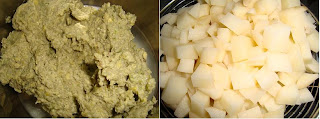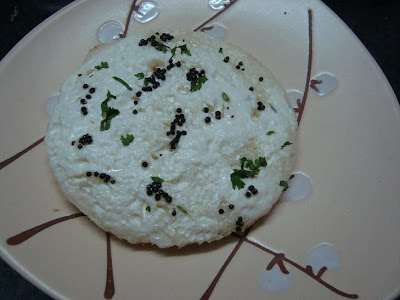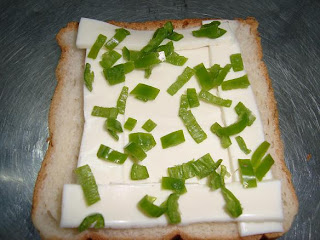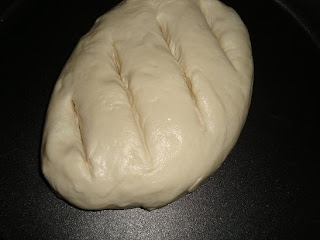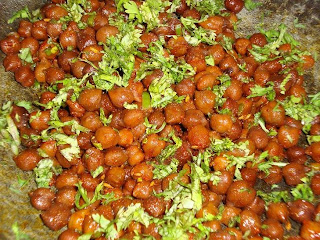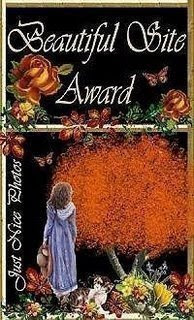Janmashtami is celebrated as the day when Lord Vishnu took his eight avatar as Krishna. Born to Devki and Vasudev in Mathura on the eight day of the dark half (Krishna Paksha) of the month of Shravana of the Hindu calendar in a Prison cell at midnight. After the forecast that it would be Devki’s son who would kill Kans; he had them imprisoned on their wedding day. One after the other he killed all of Devki’s new borns. Then was born Krishna, who was smuggled out to the nearby Gokul village thru the Yamuna River by Vasudev. It was here that Krishna spent his early childhood as Nandalal's and Yashoda's son. When he was 10 he went back to Mathura, killed his maternal uncle Kans and released his parents from the prison. His teachings of Bhagavat Gita remain relevant till date.
Ever year on this day India sees the celebration of his Birth by fasting until midnight. The Hindu calendar being lunar, these two events [the day being the eighth of the waning moon and the Rohini Nakshatram being ascendent] may overlap more often than not. As a result, like most of the Hindu festivals, this too falls on 2 days quite commonly, making life difficult for us to decide which day to celebrate the festival.
When it comes to Janmashtami, at our place we have a simple rule; we celebrate it the day it is celebrated in Mathura’s Janmabhoomi temple, this was the place Lord Krishna was born. Mathura is also the place my family hails from. This year Janmashtami was on 23rd Aug so also on 24th Aug. I celebrated it on the 24th.
Fasting on this day is so common in North India that you would find small kids fasting till midnight too. I for myself remember fasting on this day since I was 10.
In Maharashtra on the occasion of Janmashtami, 'Dahi Handis' are organized; a handi, a clay pot, suspended high above the ground are set up locally in the city, and groups of youngsters, called Govinda Pathaks try to break the handis. The winning team walks away with the rewards.
Source:
wikipediaI have laddoo Gopal/ Bal Gopal at my place. Cucumber is considered a must in the Prasad offered to him along with Panchjiri that I made with Sugar, Coconut, Almonds, Cashew, and Cardamom.

Kootu is used extensively in the food prepared for fasting in North India.
I made Kootu Aaloo pokodi with Aaloo subji, Sabudana vada, Sabudana khichdi, Panchjiri, Dahi ke aaloo. Entire food was prepared with Rock Salt as this is the only form of salt used during fasting. Fasting for the entire day and cooking the meal...I didn't get the strength to take as many pics as I would have liked of the food prepared. Just took the final pic.

In this post I will share the recipe of Kootu ki Pakodi and Aaloo ki Subji
Kootu Ki Pakodi
Ingredients:
8 T Kootu flour
2 Potatoes peeled
1 tsp Black pepper powder
1 Green Chilly chopped
Rock Salt
Water
Oil for frying
In a bowl add the Green Chilly, Potatoes cut into 1/2 cm cubes, Black pepper, Salt and the Kootu flour. Mix this and add water as required to form a thick mix. In a wok heat the oil and drop the mix little by little. Fry till crisp.
Aalo Ki Subji
Ingredients:
2 Boiled potatoes peeled
1 Green Chilly chopped finely
1 T Oil
1/2 tsp Cumin seeds / Jeera
1 tsp Red Chili Powder
1/2 tsp Coriander powder
1/2 tsp Garam Masala
1/2 tsp Mango powder
Rock Salt
5 sprigs of Coriander chopped finely
200 ml Water
In a bowl put the potatoes and add the water, mash the potatoes into small pieces. In a wok heat the oil and add Jeera. Once it splutters add green chilly, Red Chilli powder, Coriander powder and salt. Add the potato and water mix. Boil to get the consistency you prefer (With Kootu ki pakodi watery gravy is preferred). Add Garam masala, Mango powder and coriander. Serve hot with Pakodis.
Update on Kuttu:Kuttu is used extensively in Northern India to prepare food on fasting days.

Kuttu ka Atta can either we made by grinding the white seed or the Kuttu as it is with the hull. I use it with the hull...coz of the lovely color the hull imparts to the pakodis and also for the crispness it gives.

More info below on Kuttu from
WikipediaKuttu or Buckwheat or beech wheat, gets its name from its triangular seeds, which resemble the much larger seeds of the beech nut, and the fact that it is used like wheat. It is similar to sunflower seed, with a single white seed inside a hard dark brown/ black outer hull.
Buckwheat contains no gluten. Many bread-like preparations have been developed using Buckwheat. Buckwheat noodles are used extensively in the several international cuisines. The porridge made is also common. Buckwheat pancakes, sometimes raised with yeast, are eaten in several countries. The buckwheat flour gives them an earthy, mildly mushroom-like taste.
Buckwheat has also been used as a substitute for other grain in gluten free beer, in the same way as barley, to produce a malt
Medicinal use
Buckwheat contains rutin that strengthens capillary walls, reduces hemorrhaging in people with high blood pressure and increases microcirculation in people with chronic venous insufficiency
Buckwheat contains D-chiro-inositol, a component of the secondary messenger pathway for insulin signal transduction found to be deficient in Type II diabetes and Polycystic Ovary Syndrome (PCOS). It is being studied for use in treating Type II diabetes.
A buckwheat protein has been found to bind cholesterol tightly. It is being studied for reducing plasma cholesterol in people with an excess of this compound


